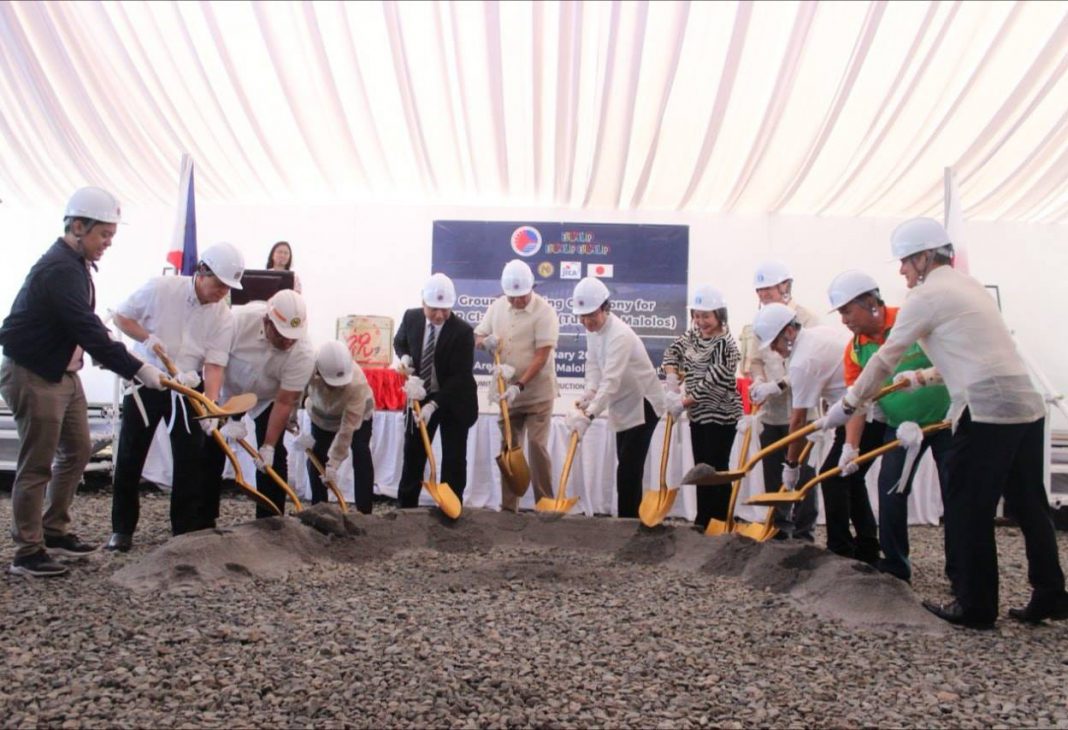Taking advantage of the perfected Japanese technology on railway system, the Philippine and Japanese government officially started the construction of the Philippine National Railways Clark 1 project from Tutuban, Manila to Malolos, Bulacan.
Transportation Secretary Arthur Tugade who led the groundbreaking ceremony together with His Excellency Japanese Ambassador to the Philippines Koji Haneda and Japan International Cooperation Agency (JICA) Chief Representative Yoshio Wada said that the target date completion of this is on 2021.
Furthermore, the Transportation Chief said, “that this is just the beginning, and more projects with the Japanese companies and collaboration with the Japanese government and other institutions will come.”
Initially, this railway system being constructed is going to be a 38-kilometer Tutuban-Malolos railway project that will extend all the way to Clark International Airport in Pampanga, for the northern segment of the 109-kilometer North-South Commuter Railway (NSCR). It is expected to cut travel time between Manila to Malolos from over one hour and 30 minutes to just 35 minutes once fully operational.
Also present during the groundbreaking were Railways Undersecretary TJ Batan, PNR General Manager Junn Magno, Japanese contractor Sumitomo Mitsui Construction president and CEO Hideo Arai, and other government officials.
Undersecretary Batan said that 91% of the 38-kilometer long railway have already been cleared for the 30-meter width alignment. The railways is a “testament” to the effectiveness of pushing for advance works for projects like this.
Japanese Ambassador Haneda said, “Utilizing Japanese technology and expertise from years of railway experience, the NSCR project will not only revive traditional railroads of the Philippine National Railways but also build state-of-the-art rapid transit system at par with global standards. Solving the perennial traffic woes and improving productivity is just around the corner.”
The first phase of this project will have 10 stations which are in Tutuban, Solis, Caloocan, Valenzuela, (all in Metro Manila), while the rest are all in Bulacan area Meycauayan, Marilao, Bocaue, Balagtas, Guiguinto, and Malolos.
This project is funded by $2.37-billion loan from Japan for the PNR Clark 1 deal which was signed in November 2015. However, there was a need for approval on the design which happened in August 2017.
The other NSCR projects, both Philippines and Japan governments signed an P80.47-billion loan agreement in January, which will connect Clark to Calamba, Laguna. And the current PNR system will be connected to the existing railway lines of the Light Rail Transit (LRT) lines 1 and 2, the MRT3, and the upcoming Metro Manila Subway.
According to DOTr Secretary, once this is completed, they expect to transport around 340,000 passengers a day when the NSCR partially operates in 2022. By 2023, around half a million of passengers will benefit from this when it becomes fully operational.














